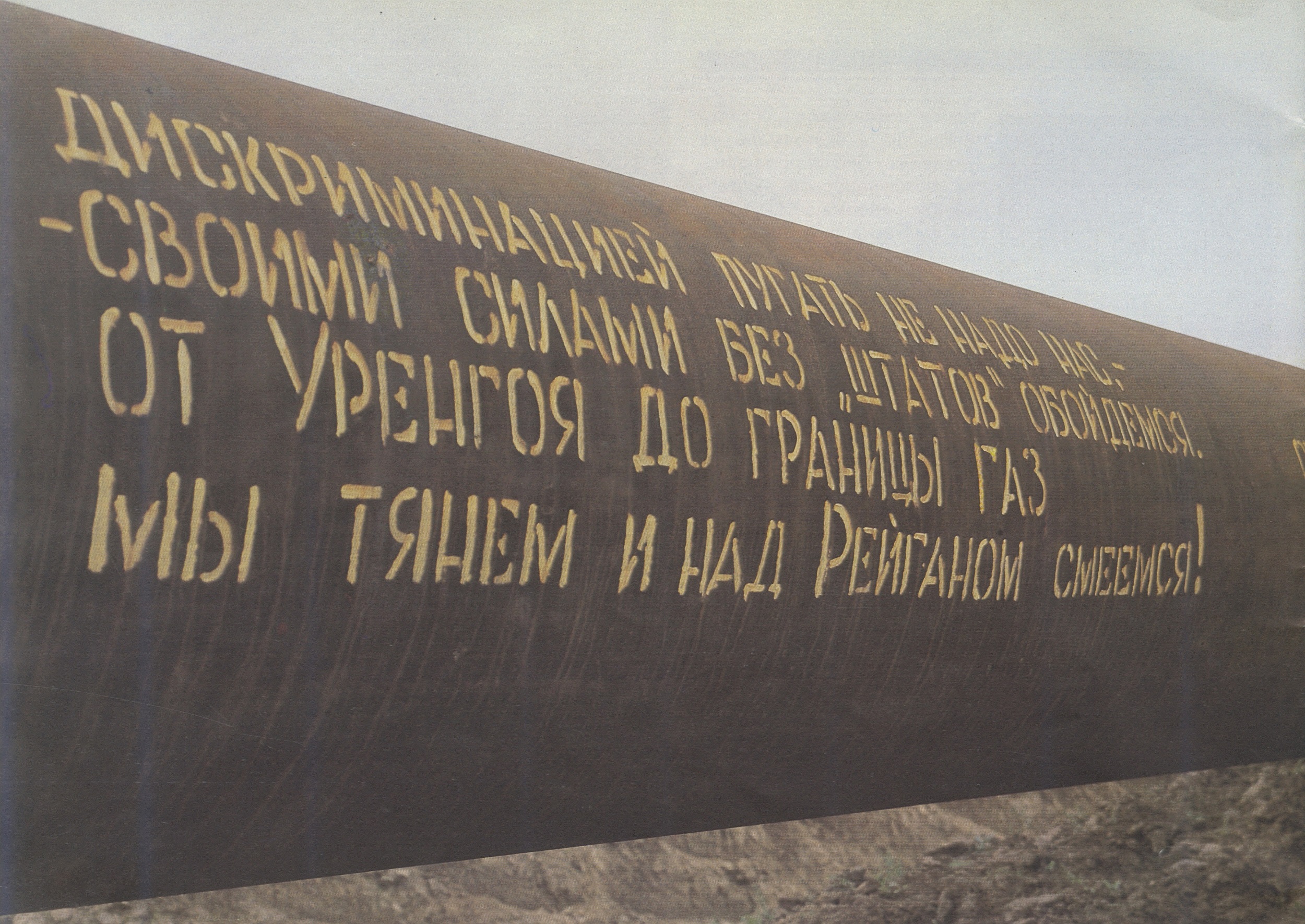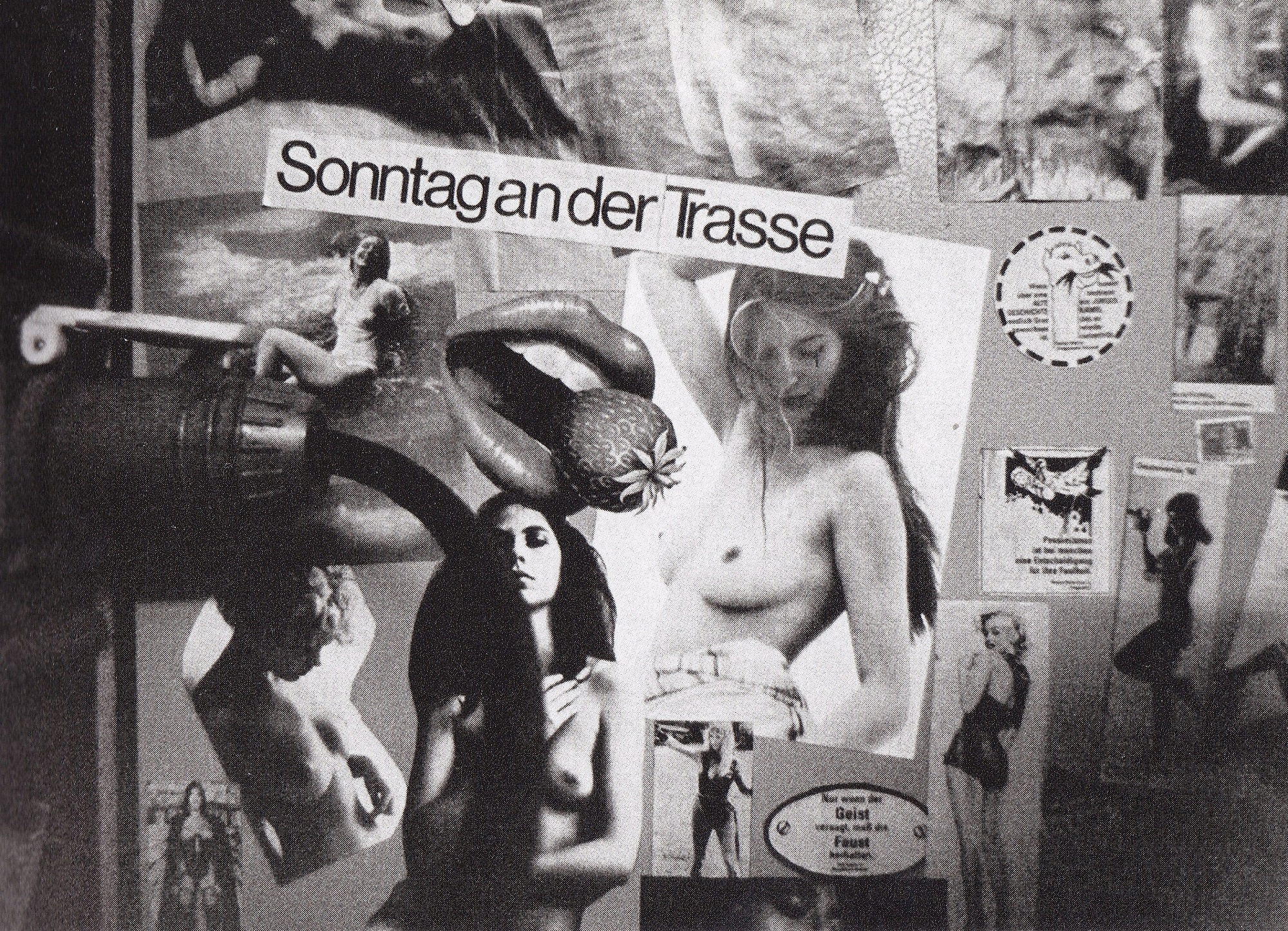Abstract
Energy Humanities have firmly established “petropoetics” as a pivotal term of modern literary studies for mapping the global flows of fossil fuels through eco-critical readings of world literature. However, the infrastructures of these circulations have largely been overlooked. Among the various means of transportation that poetics leverages, the pipeline takes precedence in its double capacity as a technical system for energy circulation and symbolic device of transcultural communication. Based on the hybrid modality of the pipeline, this insight proposes the concept of “pipepoetics” as a new tool of analysis in literary and media studies.
In his novel set during the Second World War, Daleko ot Moskvy [Far from Moscow] (1946–1948), Vasily Azhaev sends two engineers on a ski tour through the Siberian taiga to inspect the routing of an oil pipeline that they are planning. Upon encountering a construction site covered in snow, they begin to ruminate on whether infrastructure built to deliver raw materials can also deliver material for art. While construction engineer Kovshov is convinced that ‘our oil pipeline will provide far worthier material for literature than all the splendours of the virgin taiga’, his colleague Beridze is already outlining the formal contours of a poetics of the pipeline: ‘Undoubtedly a sound work of literature will be written about our oil pipeline, with precise descriptions of its approval and commissioning’ .
Half a century later, the term “petropoetics”, coined in the Energy Humanities, suggested that oil at least had arrived in literary and cultural theory, opening up new perspectives for globalised reading through the lens of cross-border energy flows. On the ‘complex map of energy use’, Imre Szeman deciphers ways to place literature ‘in relation to the world-system’ (; cf. ). Every modern understanding of World Literature is thus to be conceptualised within a history of civilisations—including their colonial contexts—that is driven by practices of natural resource extraction and distribution spanning the globe. But what about pipelines? To date, there has been no discussion of any “pipepoetics”, which is all the more astounding given the pipeline’s hybrid history as both a medium of raw material transport and a medium of communication. A possible “pipepoetics” revolves around this double function of pipelines not only as technical systems for circulating fuels but also as media infrastructure for circulating signs. This is because what pipelines transport is always more than just matter in various aggregate states: along with goods and value, they also carry symbols.
In their twofold capacity as both material and symbolic transportation technologies, pipelines provide a unique insight in the spatio-temporal dynamics of circulation and help shape a concept of cultural circulation that evolves along the power grids of global trade. With a reference to Damrosch, who lists circulation among the three key terms of World Literature (next to production and translation), Tihanov has asked whether the ‘metaphor of circulation’ can be read ‘as a figure that describes the drawn-out process of the text journeying beyond its environment, with an implicit promise of returning enriched by other cultures’ interpretations’ . The notion of a “pipepoetics” would suggest that we take the concrete, material framework of transmission in space and time as a starting point for mapping out the metaphorical routes of textual transfers.
Tubing script
The use of pipelines as a medium of symbolic communication is evident at almost every level of planning, construction and usage of pipe routes . This includes, not least, the tradition of inscribing words on welded-together tube segments, thereby turning them into a conduit of messages, a sort of pipe post. Azhaev makes extensive use of this practice in his novel. At the end of the book, one of the same engineers who, while skiing through the taiga, discovered that the oil pipeline was ‘worthy material’ for literature, now inspects the first welded-together segments of the new pipeline by the light of a torch—and touches upon a Socialist Realist piece of “pipepoetics”:
Then Alexei ran his finger along the surface of the pipe and read the words aloud: ‘Long live our Moscow! For the homeland! We shall triumph! January 1942’. With these words, inscribed for all perpetuity by fire upon the metal of the first joint, the welder Umara Mahomet had marked the beginning of the oil pipeline .
Along with the commissioning of the pipeline, this inscription marks the beginning of a new poetics: the seam pipe does not only convey the novel’s ideological leitmotif plainly. From a poetic perspective, the welded words offer an additional reading: they are a programme for a literature in which every written statement is closely coupled with the transportation of energy sources, in which every written statement draws directly on resource flows. The words inscribed by fire, that appear like an epiphany in the light of the torch, stage nothing less than the primal scene of a new literature of the pipeline. Burnt into the skin of a tube, this literature collects its prophetic, promethean and energetic evidence from the material infrastructure of the scene of its writing: fire, iron and oil fuse into a technological-symbolic structure that is both a transportation network and a scripting system.
Chronotopoi of the pipeline
Azhaev’s claim to a longue durée of pipe inscriptions points to a further aspect of “pipepoetics”: while pipelines are perceived primarily in their spatial function of overcoming large geographical distances, the vision of writing on pipes for perpetuity signals their temporal unbounding to become eternal. By no means does this refer solely to an endless future; it also extends backward into the depths of geological time, whence the raw materials circulating in pipe networks originate. Benjamin Steininger has noted that as ‘one of the major technical systems of the present’, pipelines, in conjunction with temporary storage facilities, transhipment ports, refineries and distribution points such as petrol stations, cover a vast temporal scope along with their geographical range. In the ‘energetic short circuit between geological history and modernity’, they fuse the present of fossil fuel societies together with the prehistory of fuels accumulated over millions of years so that ‘almost cosmic periods of time come into view through the pipeline’ .
This temporal crossover has been extensively exploited by literature, in particular in a genre that could be called “fossil fuelled mythopoetics”. In the novel Pers [The Persian] (2010), Alexander Ilichevsky has his protagonist, the geologist Ilya, travel to the oil fields near Baku to dig deep into this past. While not only searching for the Azerbaijanian roots of his own biography, Ilya continues his quest for the primary code of a ‘Last Universal Common Ancestor’, purportedly to be extracted from every oil well. ‘It’s the DNA of life that can be found in any oil sample’ , believes Ilya, and it is this encapsulated genome of our evolutionary origin that the novel propels through drill pipes to the surface of present time and disseminates it in the cracks and fissures of ‘the tectonic ruptures of history’ . Along the paths of pipelines emerges an infrastructure of a planetary chronotopos, which points to both the deep space of transcontinental expanses and the temporal chasm of archaeological depths.
Political poetics of the pipeline
It is not least this dynamic of space and time, through which the pipeline catapults information across eons and territories, that makes it so attractive as a writing medium in fictional as well as in factual worlds. As photographs of the construction of the Urengoy-Uzhhorod pipeline in the early 1980s show, the use of pipes as pneumatic post was also practised in Socialist everyday life. It allowed for succinct propaganda slogans, such as ‘Our response to Reagan: Finishing the Urengoy-Uzhhorod pipeline ahead of schedule!’ (Fig. 1). But there was also plain political verse about the pipeline: ‘None of their sanctions deter us / Without the States we can do it alone, just for us. / From Urengoy to the border, across the whole corridor / Our gas it’ll flow and make Reagan eat crow!’ (Fig. 2).
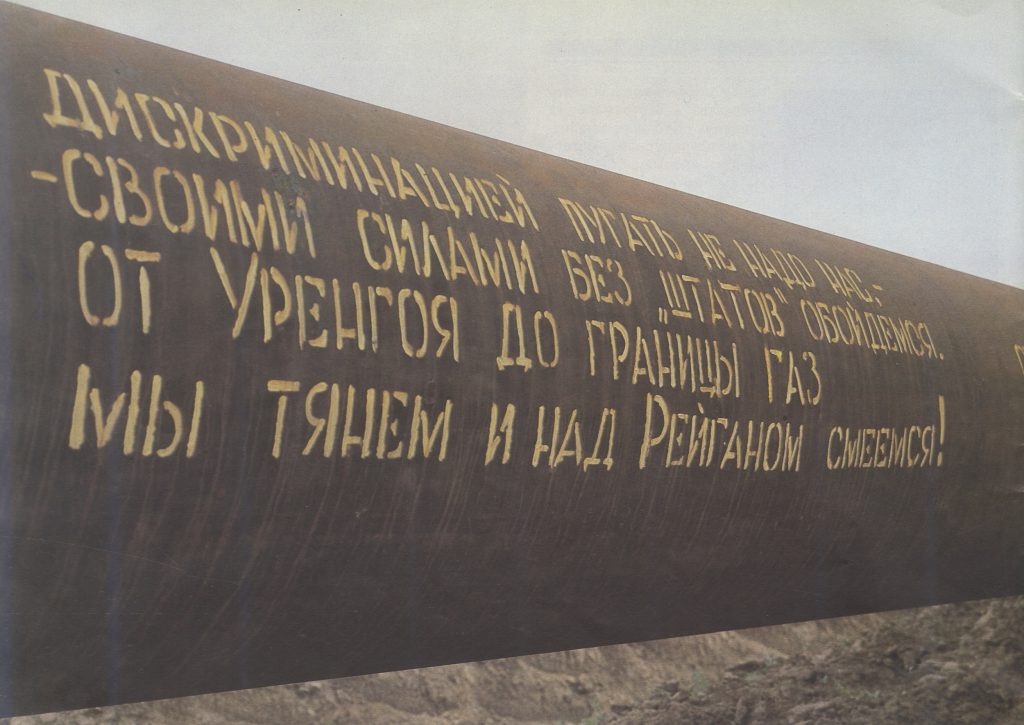

“Pipepoetics” as propaganda: inscriptions on the Urengoy-Pomary-Uzhhorod pipeline in verse and prose.
Fig. 1: [None of their sanctions deter us / Without the States we can do it alone, just for us. / From Urengoy to the border, across the whole corridor / Our gas it’ll flow and make Reagan eat crow!]
Fig. 2: [Our response to Reagan: Finishing the Urengoy-Uzhhorod Pipeline Ahead of Schedule!]
Fig. 1 from: 1978-1998. 20 let Urengoygazprom ; Fig. 2 from: Gazoprovod Urengoy-Uzhgorod
These slogans reveal the pipeline on the crossroads of geopolitical and geopoetic relations. The Urengoy-Uzhhorod pipeline, the construction of which came about through the “pipes for gas” contract, also dubbed the “deal of the century”, embodies this in an exemplary way. The first plans for a gas pipeline from Western Siberia to Western Europe were negotiated in the late 1970s; as Cold War tensions peaked in 1980, this led to a natural gas pipe conflict in which the US threatened its Western European allies with sanctions if they provided the Soviet Union with pipeline technology in exchange for natural gas (see ). By the time the contract was signed and even before the beginning of construction, the pipeline had—after protracted negotiations and interventions by the Reagan administration in 1981–1982—become an exemplary case through which the relationship between East and West was negotiated in terms of confrontation and collaboration—a situation that in recent years has been repeated, albeit with significant differences, in the controversial Nord Stream II pipeline.
The debate on the Urengoy-Uzhhorod pipeline shaped a discursive field on pipelines as channels of information, interfaces of communication and routes of trade between East and West that reverberated in the discourse of later pipeline projects and was readily adapted by the arts. The 1985 film Kontrakt veka [Deal of the Century] by Aleksandr Muratov translated the rather logocentric history of negotiating, sanctioning and bargaining into a spy story, replete with intrigues, conspiracy and long sequences with split screen to display the difficulties of placing the disputed deal into a single, coherent frame. The film poster arranges this complex constellation of economic deal making and deal breaking, affective attachments and distanced side standing, coupling and complicity within the circle of a pipe diameter (Fig. 3).
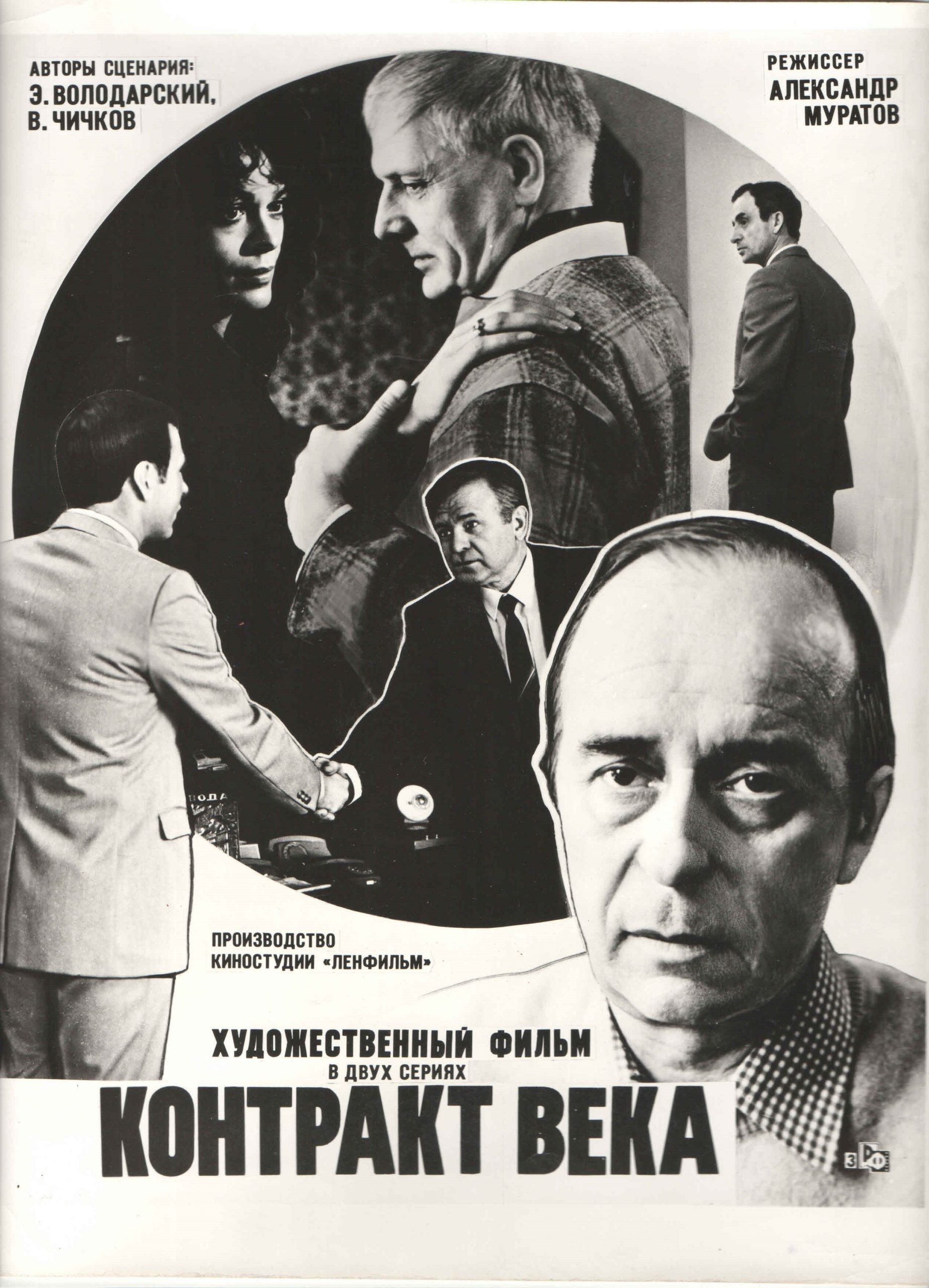

Entangled spaces
Pipelines form relationships that represent transregional, transnational or transcontinental interweavings in a multitude of varying assemblages. They imagine the pipeline as an energetic umbilical cord that transforms long-distance relationships into intimate, almost symbiotic connections; they picture transportation tubes as lifelines of vast areas towards which all other transportation capacities and spatial dynamics gravitate from the peripheries; they project the pipeline as a guiding line through expansive, heterogeneous spaces; or they figure pipe routes in diagrammatic structures that remap the transnational entanglements of modern energy empires in abstract weaving patterns (Figs. 4 and 5).
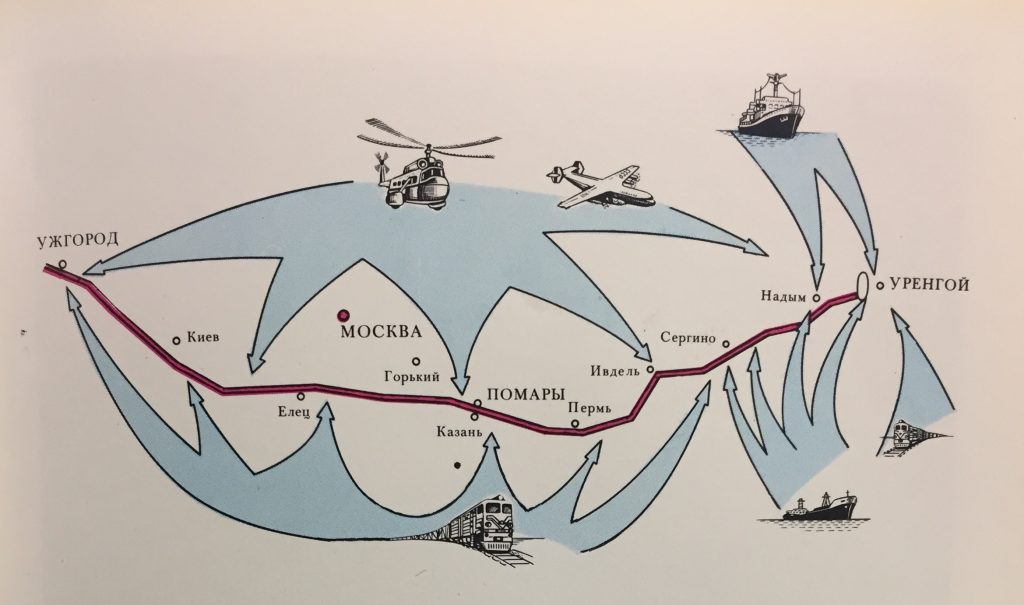

Throughlines and their linkages: diagrams of the course of the pipeline Urengoy-Uzhhorod.
Fig. 4 from: Transkontinental’nyj gazoprovod Urengoy – Pomary – Uzhgorod ; Fig. 5 from: Gazoprovod Urengoy-Uzhgorod .
Whatever imagery is chosen, it displays the pipeline as medium that renders space dynamic and elastic; yet it also can string and strap it anew within the interlinkages and ties of resource regimes. As much as pipeline projects surround themselves with the aura of a passage that opens up new horizons and transforms existing landscapes with an almost demiurgic power, at the same time they threaten to draw these openings to a close, turning entangled spaces into entrapments. At this point arises a different imaginary that has also closely been associated with pipelines—that of a geopolitical weapon. One might already detect this imagery in the iconography of the Kontrakt veka poster that unambiguously projects the diameters of tube and barrel on top of each other, thus revealing the pipeline as a pathway and means of both rapprochement and warfare. This has not only become a leitmotif in recent political narratives of pipelines, most prominently with Nord Stream II as one of the main battlefields of a catastrophically failed “change through trade” politics. It is prevalent in “pipepoetics” from the very beginning up until today: ‘The pipeline provides oil as a strategic lube and a neutral vehicle of war machines with a mobile and diffusive effectivity,’ reads the monologue of ‘Z’ in Reza Negarestanis experimental novel Cyclonopedia .
Temporal communities
In as much as pipelines are not only a technical instrument of geopolitical and economic interest, but also a medium of intercultural communication, they constitute their own rhetoric. The vocabulary of the Socialist International and worker solidarity is an inextricable part of the repertoire of the Urengoy-Uzhhorod pipeline—‘The spirit of international cooperation and mutual helpfulness prevailed along the entire natural gas route’, the correspondent Vitaliy Zaseev reported shortly before the completion of construction in late summer 1983. There is also recurrent use of metaphors about viaducts across chasms or between banks, which make the pipeline a bridge .
This language of interconnectedness does not only elude persistent reports about the use of conscripted labour on construction sites (; see also ). It even makes the pipeline a safe space to foster bonds of kinship and intimacy that includes close personal relationships. The names of major pipelines, such as Bratstvo [Brotherhood] (1967) and Sojuz [Union] (1980), both of which transported Soviet gas through Ukraine to the western border of the USSR, claim to forge alliances that extended far beyond trade agreements and dig deep into international coupling. This was programmatically pronounced at the construction site of the natural gas route Druzhba [Friendship] (1964), where brigades from Hungary, Czechoslovakia, Poland and the GDR met, mingled and established temporary communities. Songs about the pipeline, such as “Trassentrinklied” as well as Kurt Tetzlaff’s documentary for DEFA Begegnungen an der Trasse [Encounters Along the Route] (1976) highlighted this moment. A glance at the mobile settlements of these provisional communities reveals the extent to which the idea of the tubular dominated even social life and procreated a modern nomadic subject that was dubbed “trassnik” (from the Russian trassa, meaning “route”). Pipe-shaped dwellings, in which the trassniks along the route were housed, were dismantled from time to time so that they could migrate along the piping system in accordance with the rhythm of the construction phases (Fig. 6).


From: Transkontinental’nyj gazoprovod Urengoy – Pomary – Uzhgorod .
Under these conditions working on and living in a pipeline merge and morph into each other. Occasionally, construction and cohabitation ventures facilitate more permanent personal partnerships. Pipes appear as infrastructures of social cohesion and human procreation. Where tube segments are welded together so that streams of energy can flow, rings can be exchanged to regulate the migration of bodies along the pipeline (Fig. 7).
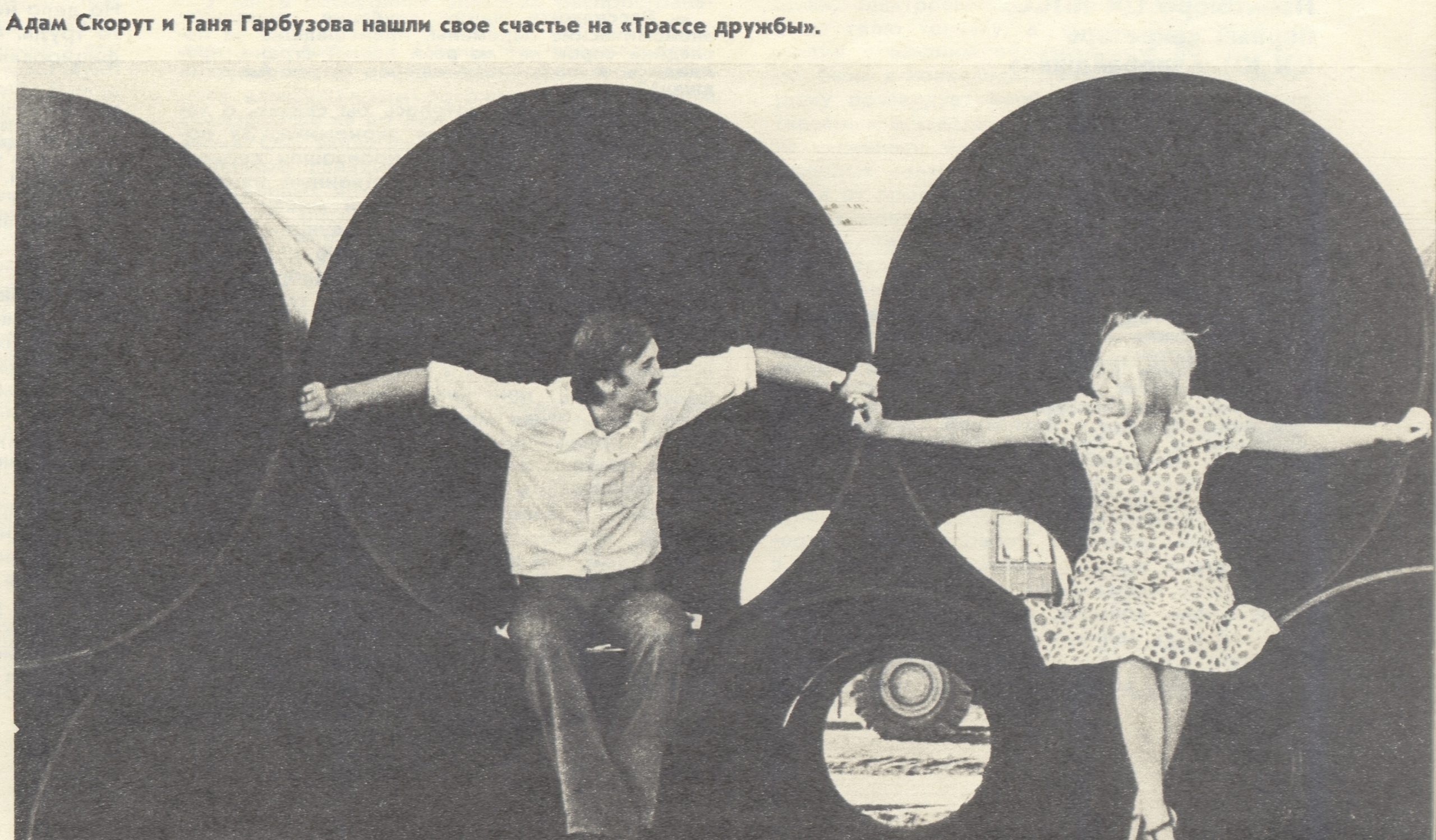

From: . Ogonek is one of the most important sources of photographic and visual representation of life in the Soviet Union, much akin to LIFE magazine in the United States.
Literary libido
Literature and film extensively exploit not only the social but also the erotic connotations of energy streams that are associated with pipelines. Narratives of desire frequently develop along the routes and raw material flows of pipelines. While Upton Sinclair was compelled by censors to cut a motel sex scene from the original version of his novel Oil! (1926–1927) (in response to which the fig-leaf edition was created), energies could later flow seemingly without restraint. However, there remains a certain evasiveness to them combined with a constant threat of blockage. As much as pipeline construction sites are promoted to be intermediary spaces of (transnational) bonding, they, in fact, often create distinctly isolated living environments. In remote and secluded settings thrives an imaginary of longing where predominantly heterosexual male desire is channelled into stereotypical fantasies of nude female bodies, often combined with colonial escapism (Fig. 8).
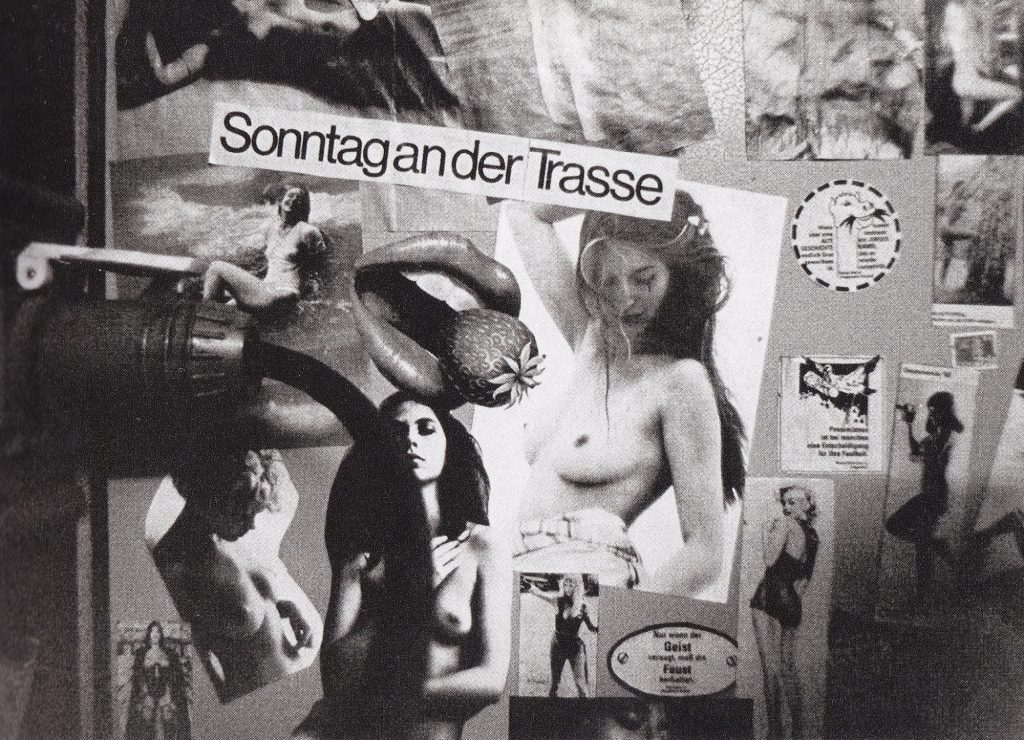

Figs. 8 and 9: ‘Sunday on the pipeline’. Displays of desire on the “Friendship” pipeline. From:
Along with the imaginary of (colonial) porn, the myth of a slippery “oil virgin”, setting everybody on fire who tries to take hold of her, appears in variations of a number of pipe novels, including Ilichevsky’s Pers. It has become especially popular in thrillers about natural resources espionage between East and West. In The World Is Not Enough (1999), James Bond and his female companion race through an oil pipeline between the Caspian Sea and the Mediterranean to defuse a nuclear bomb (Fig. 10). Their deliberate failure to prevent detonation (‘Let it explode!’) is an ingredient of the energetic-orgiastic intrigue centred on the object of affection Elektra, who (in closely following the mythological script) has killed her father to become the owner of the King Pipeline (that runs along the same route where the real Baku-Tbilisi-Ceyhan pipeline would be built from 2002 to 2005). In her efforts to channel oil, lust and money efficiently, Elektra ultimately makes a fatal miscalculation so that in the end, her vision of a pipeline that fuses together libidinous and monetary flows, as well as East and West, proves to be a pipe dream. As simplified as this popular adaption of the ancient Elektra myth might seem, it is a striking example of how “pipepoetics” connects with resource infrastructures to tap an energetic unconscious that shapes our imagination.


Unlike petropoetics, “pipepoetics”, so far, has received little attention in literary studies, let alone become a term in its own right. However, this brief outline might give an idea of how pipelines not only serve as a technical infrastructure to circulate natural resources or as a material prop to set the scene for a specific subcategory of literary thematology, but are conduits of words, media of a literature that spans prehistorical times with utopia, that moves along global resource routes, that crosses borders and migrates together with geopolitical agendas, and that closely connects with the imaginary of both intimate and collective desire. If we wish to trace the literary and cultural networks of spatio-temporal communities in transition, pipelines could lead a way to do so.



